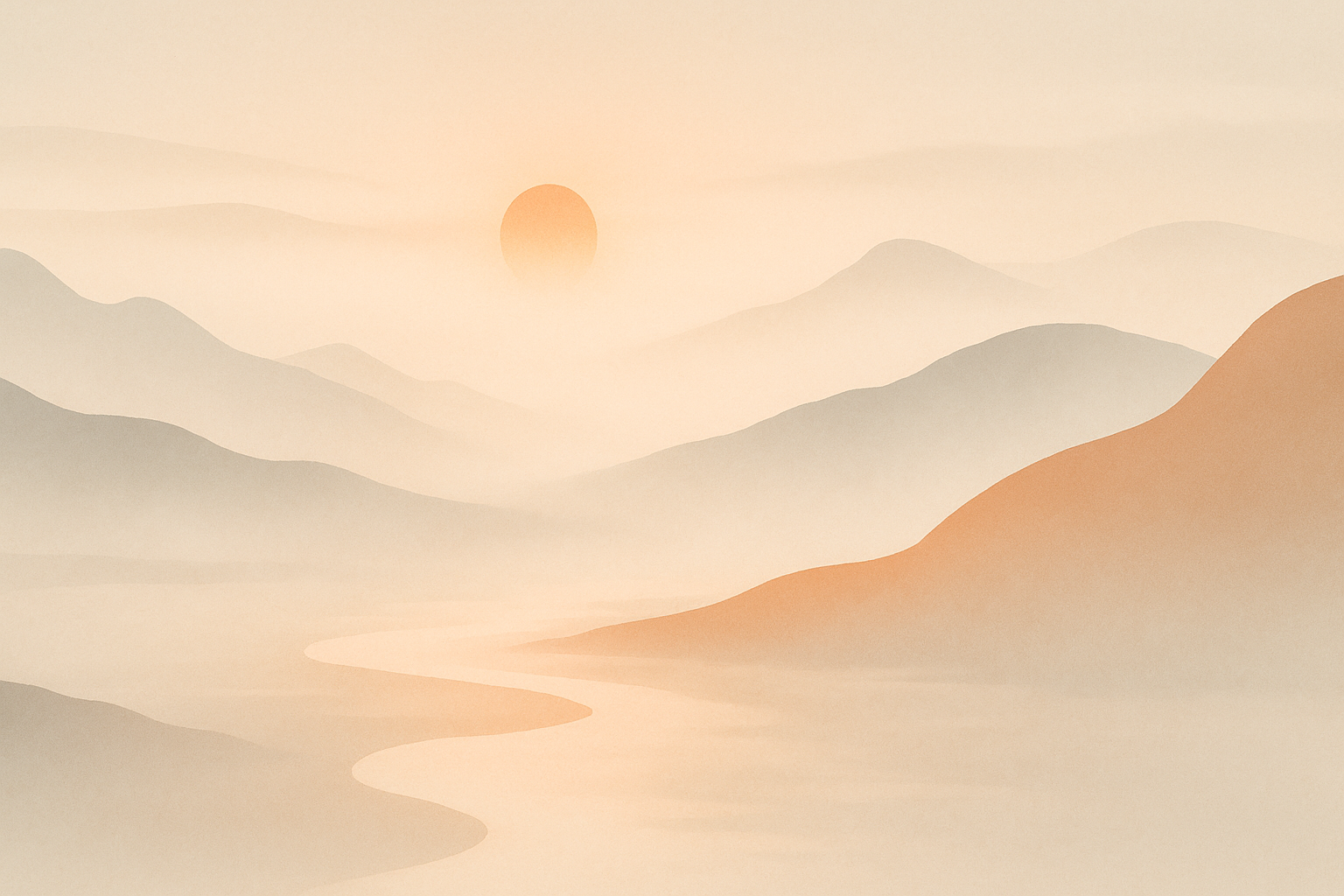Daoism on Identity: Who Am I?
Daoism (Taoism) answers the question “Who am I?” not through rigid definition, but through unfolding awareness. It invites the seeker to unlearn fixed identities and rediscover their nature as part of the Dao (道) — the ineffable, spontaneous flow that animates all things.
🌀 The Self as Flow, Not Form
In Daoism, “Who am I?” cannot be answered with a concept or category.
You are not a noun — you are a verb.
To the Daoist, identity is fluid and ever-changing, like water adapting to its container. Laozi writes in the Tao Te Ching:
“The softest thing in the world overcomes the hardest.”
(TTC 43)
Just as water flows without clinging, the wise person lives without clinging to a self-image. The more you try to define yourself, the further you drift from the Dao. True knowing comes from not-knowing — from resting in the mystery.
🌿 The Dao Within All Things
You are not separate from nature or the cosmos; you are nature.
The Daoist self is non-dual — there is no boundary between “me” and “the world.” Zhuangzi expresses this beautifully in his parable of the butterfly:
“Once Zhuang Zhou dreamed he was a butterfly…
But when he awoke, he did not know whether he was Zhou who had dreamt he was a butterfly,
or a butterfly dreaming he was Zhou.”
This story suggests that the distinction between self and other, dream and waking, is ultimately illusory. The “I” that asks the question is not fixed — it shifts with the rhythm of the Dao.
🌬 Wu Wei and the Effortless Self
Daoism emphasizes wu wei (無為) — effortless action.
When you stop striving to become something, your true nature acts through you spontaneously.
Identity in Daoism is not constructed but revealed through alignment.
The sage does not impose will upon life; he harmonizes with it.
The I that acts from ego dissolves; what remains is the Dao acting through you.
☯️ The Self as Empty, Yet Full
Daoism teaches that the self is like a vessel: useful because it is empty.
In Tao Te Ching (Chapter 11):
“Thirty spokes share one hub,
but it is the center hole that makes the wheel useful.”
Emptiness (xu, 虛) is not nothingness but openness — a space through which life can move freely.
So the answer to “Who am I?” is emptiness full of potential, a mirror reflecting the 10,000 things without clinging to any.
🌄 Living in Harmony
To live as Daoism teaches is to recognize that:
- You are not the mask, but the space behind it.
- You are not the wave, but the ocean moving as that wave.
- You are not separate, but a momentary expression of the Dao’s eternal dance.
Thus, the Daoist self is impersonal, dynamic, and harmonious — an ever-flowing balance of yin and yang.
🪶 Summary
| Aspect | Daoist View |
|---|---|
| Essence of Self | A temporary expression of the Dao |
| Ego | A useful illusion; source of disharmony |
| True Nature | Spontaneous, natural, and unforced (ziran 自然) |
| Path | Wu wei — acting without resistance |
| Realization | You are the Dao experiencing itself |
🌺 Final Insight
Daoism answers “Who am I?” by saying —
You are the Dao, moving as a particular form. When you let go of who you think you are, what remains is what you truly are: natural, spontaneous, and whole.

Leave a Reply